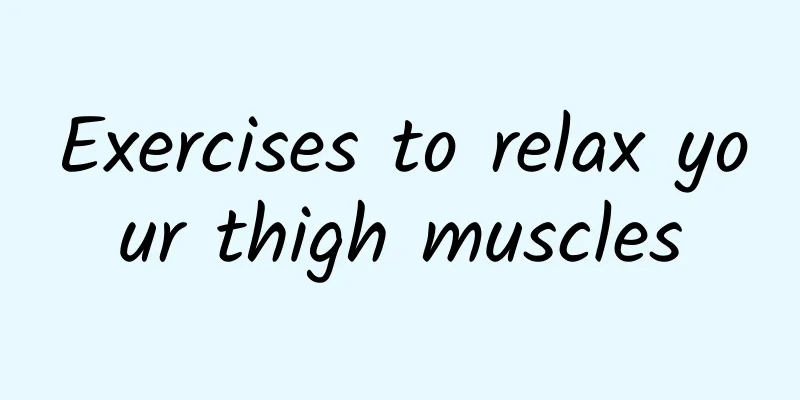Exercises to treat knee cracking

|
It is normal for the knees to make noises. Our knee joints are made up of pieces of bones. When there is friction at the junction of these bones, noises are likely to occur, but this noise does not occur often. This is because our leg muscles and tendons are connected, which can prevent this kind of noise from occurring. If your knees make noises and feel pain when you squat, it is best to get checked out. 1. There may be a sound when the knee moves, which may be caused by knee osteoarthritis Knee osteoarthritis is common in middle-aged and elderly people, and is characterized by pain, discomfort and swelling in the knee joint, and popping sounds in the knee joint during movement. X-rays show varying degrees of bone hyperplasia in the bone joints. 2. The sound of knee movement may be caused by meniscus injury Meniscus injuries are more common in young people with a history of trauma and strenuous exercise, and they may experience joint pain, weakness, locking (the knee joint gets stuck when flexed or extended to a certain angle), and popping. If the examiner fixes the patient's affected thigh with one hand and rotates the calf with the other hand while flexing and extending the knee joint at the same time, a popping sound may occur, accompanied by pain. In patients with severe meniscus injury or prolonged injury, thigh muscle atrophy may be seen. 3. There may be cruciate ligament injury if there is a sound when the knee moves Most patients with cruciate ligament injury have a history of trauma. After the injury, the knee joint continues to be painful and swollen, and the patient cannot walk or the pain worsens when walking. There may be a sound when the knee joint is flexed and extended, and displacement between the bones can be felt. The patient feels that the knee joint is unstable. 4. There may be noise when the knee moves, which may be patellar chondromalacia Chondromalacia patellae refers to a disease of the patellofemoral joint caused by chronic damage to the patellar cartilage surface, which causes the cartilage to swell, crack, break, erode, and fall off. Finally, the opposite femoral condyle cartilage also undergoes the same pathological changes, resulting in osteoarthritis of the patellofemoral joint. Long-term, forceful, and rapid flexion and extension of the knee joint increases wear on the patellofemoral joint, such as the training of cyclists and skaters, which is a common cause of this disease. Congenital patellar developmental disorders, abnormal position and size of the femoral condyle, or acquired knee valgus, valgus, tibial external rotation deformity, etc. can all make the patella unstable. During the sliding process, the compressive stress on the patellofemoral joint surface is concentrated at a certain point, becoming the basis for chronic injury. The nutrition of patellar cartilage mainly comes from synovial fluid. Abnormal synovial fluid composition caused by various reasons can cause malnutrition of patellar cartilage, which is susceptible to degeneration due to slight injuries. Abnormal composition of synovial fluid due to various reasons. Note: The occurrence of chondromalacia patella has its internal and external factors; the internal factor is the degeneration of articular cartilage itself, which is related to factors such as age; the external factor is the chronic damage to articular cartilage caused by mechanical factors; to prevent the occurrence of chondromalacia patella, it is necessary to reduce the continuous pressure on the patellofemoral joint and improve the nutrition of cartilage. Knee joint care and exercise The knee joint is the most important joint in human movement. Running, jumping, squatting and other movements all require the cooperation of the knee joint. In daily exercise, the knee joint is one of the most vulnerable parts. People who have injured their knees when they were young have several times the rate of developing arthritis in middle-aged and old age than those who have not been injured. Therefore, during exercise, you must pay attention to protecting your knee joints. Correct landing posture during exercise can prevent knee injuries. When landing, the forefoot should touch the ground first, the knees should be bent, and the body should lean forward slightly, trying to avoid the knees from tilting forward and backward. Be sure to choose a flat and suitable venue for exercise, and do not exercise in a place that is too hard or bumpy. Warm up for 10-15 minutes before exercise to loosen up the joints throughout the body. After a knee injury, do not flex and extend the injured area back and forth, but straighten your leg and apply ice in time to relieve pain and swelling. It is best to use knee protectors when exercising. In addition, leg exercises are also helpful in protecting the knee joints. Straight leg raises are a simple and easy method: lie flat on the bed, stretch your legs, tighten and straighten the muscles in your thighs, making a 45-degree angle with the bed, let the straightened legs stay in the air, then slowly put them down, and repeat this 50 times. |
<<: Why does the knee make a sound when squatting?
>>: The process of doing an MRI of the knee
Recommend
There are small bumps on both sides of the neck
If there are small pimples on both sides of the n...
How to treat asthma in the elderly? Chinese medicine teaches you how to treat it
As people age, their body functions decline, thei...
A red hard pimple on my face
Women are generally very concerned about their ap...
What does femur length mean?
If you want to know what femur length means, firs...
How many days does it take for Haima Duobian Pills to be effective?
The Haima Duobian Pill for Qinggong Surgery is co...
What happens if the dosage of Chinese medicine is too large?
Many people believe that the side effects of trad...
Can I eat fish if I have oral ulcers?
Oral ulcer is a common oral disease. There are ma...
What is the best medicine for left kidney cyst?
Left kidney cyst is relatively common in life. Ge...
What are the reasons for babies vomiting and fever in summer?
Babies have poor resistance and their organs are ...
5 common side effects of oxygen therapy
5 common side effects of oxygen inhalation: Inhal...
Amyloid nephropathy treatment
Amyloid nephropathy, also known as amyloid nephro...
What causes numbness in the big toe?
Toe numbness is a complication of many diseases, ...
Is moxibustion useful for eczema?
Moxibustion is a medical method that uses medicin...
What are the taboos of safflower oil?
Safflower oil is a medicine we often use to treat...
Things to note when having double eyelid surgery
Double eyelid surgery is the most common type of ...









